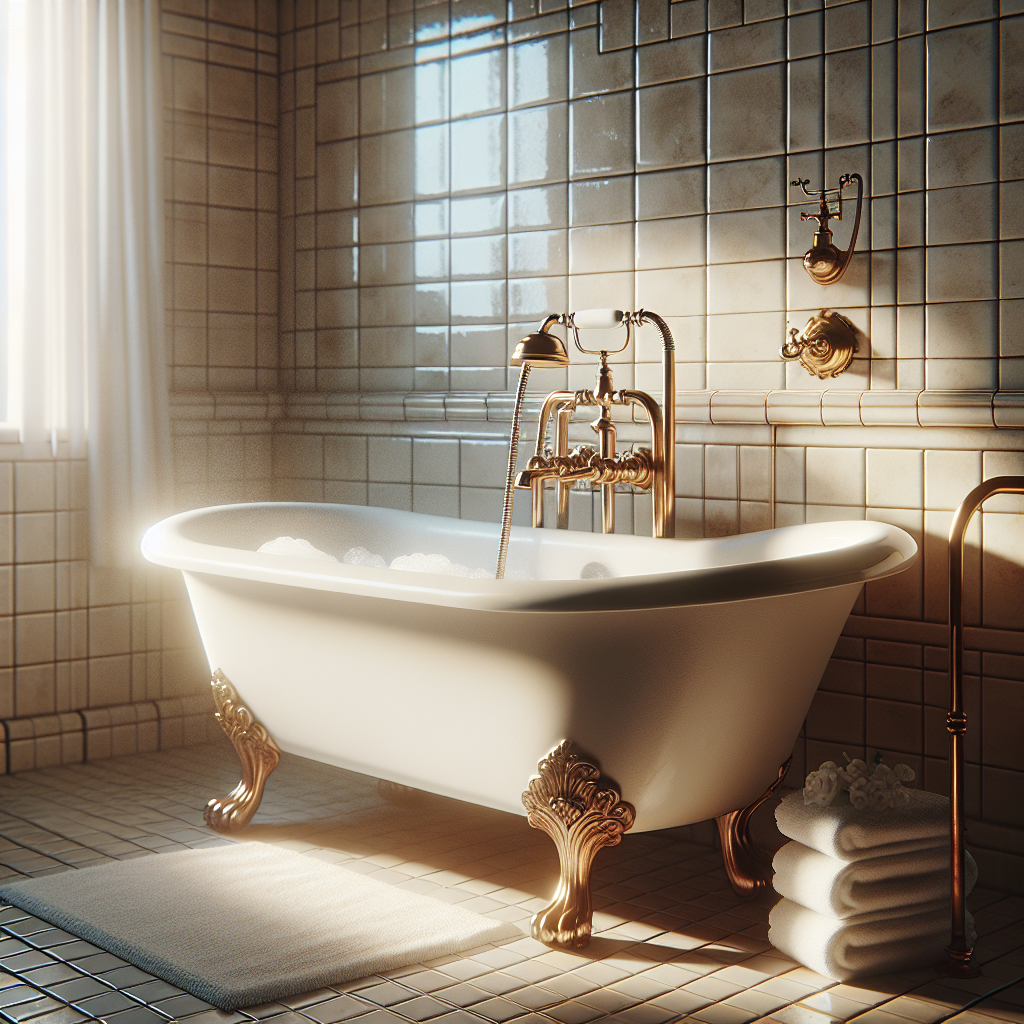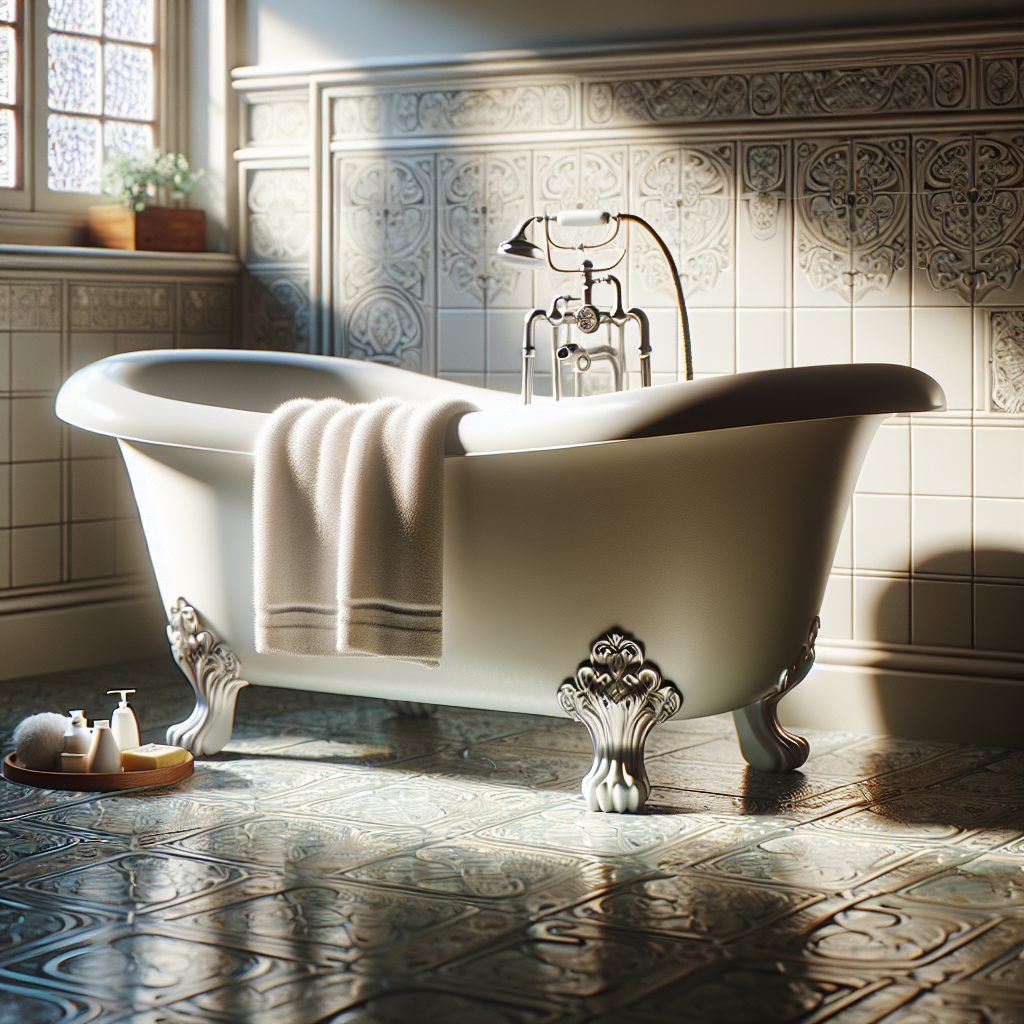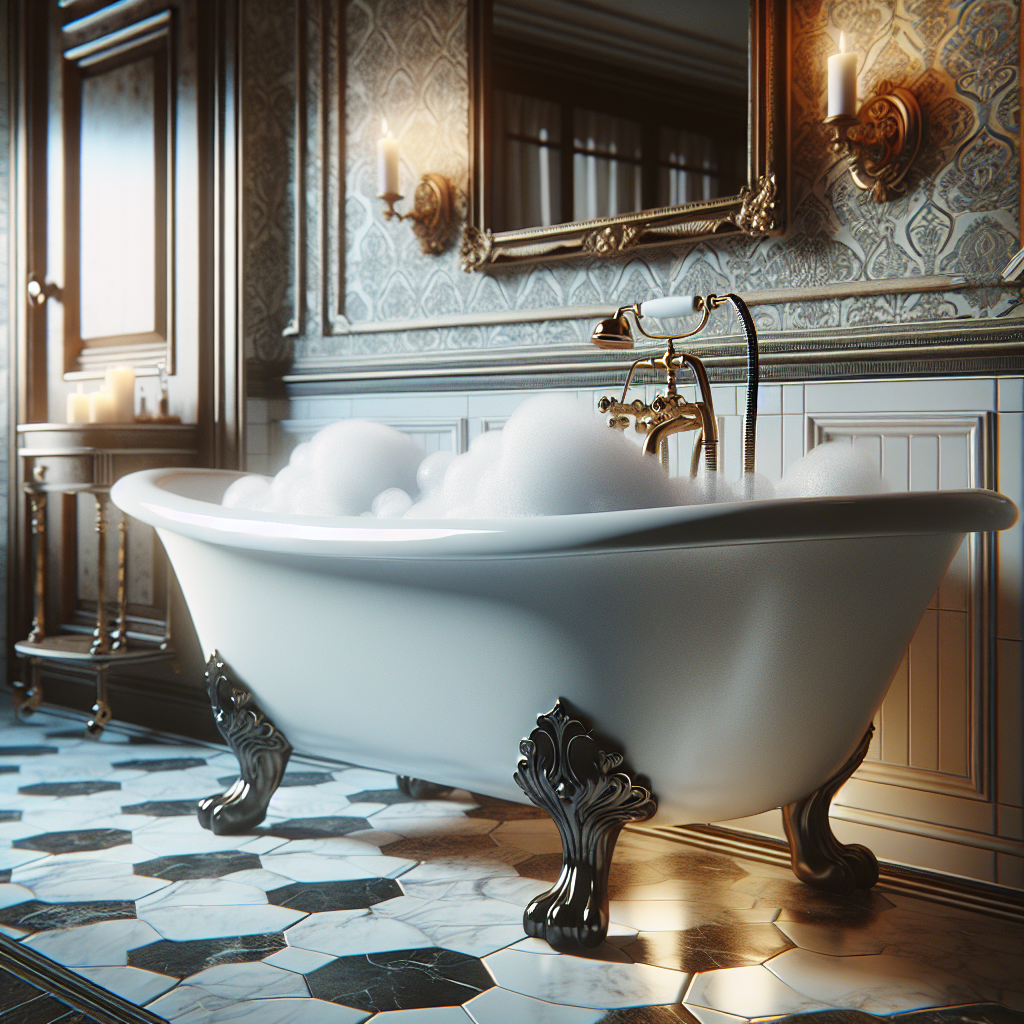
Key Takeaways
-
Refinishing a clawfoot bathtub can restore its original beauty and is often more cost-effective than full remodeling.
-
Preparation is key to a successful finish, including thorough cleaning and sanding of the tub.
-
Using the right materials and following a step-by-step process can help DIYers achieve a professional look.
-
Remodeling may be necessary if the tub is severely damaged or if a new design is desired.
-
Maintenance and proper care are essential to preserving the longevity of a refinished or remodeled clawfoot bathtub.
Reinvigorate Your Clawfoot Bathtub: Refinish or Remodel?
Whether it’s the centerpiece of a vintage bathroom or a standalone statement piece, a clawfoot bathtub can add a touch of elegance to any home. But over time, these classic fixtures may show signs of wear and tear. You’re faced with a decision: should you refinish your beloved clawfoot tub, or is it time for a complete remodel? Let’s explore the options to help you make the best choice for your bathroom and your budget.
Refinishing vs Remodeling: Understanding the Pros and Cons
| Refinishing | Remodeling | |
| Cost | $300 to $650 | $2,000 to $6,000 |
| Timeline | A few days to a week | Takes several weeks |
| Pros | Preserves the tub’s original craftsmanship, increases overall value of home with the tub as a significant antique asset | Ideal if tub is severely damaged, can fit your ideal aesthetic |
| Cons | Fixes surface-level problems only | May not increase home overall value |
| Longevity | Can last up to 10 to 15 years with proper care | May last longer depending on the tub’s materials and craftsmanship |
Understanding the Basics of Clawfoot Tub Restoration
Restoring a clawfoot tub often involves refinishing the surface to bring back its original luster. This can include repairing chips, fixing rust spots, and re-coating the tub with a durable finish. You can refinish your tub for $300 to $650. It’s a cost-effective way to refresh the tub without altering its authentic charm.
Achieving Elegance: Advantages of Refinishing
Refinishing a clawfoot tub has several advantages. It’s generally less expensive than replacing the tub entirely, and it allows you to preserve the original craftsmanship. Plus, it can be a satisfying DIY project that leaves you with a sense of accomplishment.

Step-By-Step Guide to Refinishing Your Clawfoot Bathtub
Ready to roll up your sleeves and give your clawfoot tub a new lease on life? Follow this guide to ensure a smooth refinishing process.
Materials You’ll Need to Begin
Before you start, gather all the materials you’ll need. This will help streamline the process and avoid any unnecessary interruptions.
Gathering Supplies
You will need:
-
Chemical cleaner or a homemade solution of vinegar and water
-
Fine-grit sandpaper or a sanding block
-
Tack cloth or a lint-free rag
-
High-quality epoxy primer
-
Acrylic urethane enamel or a similar durable paint for the topcoat
-
Paintbrushes and a paint roller designed for smooth finishes
-
Plumber’s putty and caulk, if necessary for sealing
Safety First: Protective Gear
Don’t forget to protect yourself:
-
Wear gloves to shield your hands from chemicals and rough surfaces.
-
Use a respirator or mask to avoid inhaling fumes or dust.
-
Protect your eyes with safety goggles during sanding and painting.
Preparation: The Key to a Flawless Finish
The effort you put into preparing your clawfoot tub for refinishing will directly affect the quality of the final result.
Cleaning: Removing Years of Use
Start by giving your tub a good scrub with a chemical cleaner or a vinegar-water solution to remove any soap scum, rust, or old paint. Rinse thoroughly and let it dry completely.
Sanding: Smoothing the Surface
Once the tub is clean, sand the entire surface with fine-grit sandpaper. This creates a rougher surface for the primer to adhere to. Wipe down the tub with a tack cloth to remove all dust and debris.
Application: Bringing the Shine Back
Now, let’s move on to the painting phase, where you’ll bring the shine back to your clawfoot tub.
Primer: The Foundation Layer
Apply a high-quality epoxy primer to the entire surface of the tub. This will ensure a strong bond for your topcoat and help prevent future chipping or peeling. Allow the primer to dry as directed by the manufacturer.
Painting: Color and Protection
Once your primer has set, it’s time for paint. Choose an acrylic urethane enamel for its durability and glossy finish. Apply with a paintbrush or roller in thin, even coats to prevent drips. Let each coat dry completely before applying the next. This step is not just about aesthetics—it’s about creating a protective layer that can stand up to daily use.
Final Touches: Detail Work for Longevity
After the final coat of paint has dried, it’s time for the details that ensure your tub’s longevity. Check for any missed spots or potential weak areas in the coating. A small artist’s brush can be handy for touch-ups.
-
Inspect the surface for uniformity and coverage.
-
Address any drips or uneven areas with fine-grit sandpaper, followed by touch-up painting.
-
Re-caulk any areas where the tub meets the wall or floor, if applicable.
Sealing: A Barrier against Wear and Tear
Sealing the paint job is critical for water resistance and durability. Apply a clear topcoat sealer designed for use in wet areas. Follow the manufacturer’s instructions for application and drying times. This extra step can make a big difference in how well your tub stands up to splashes and steam.
Curing: Patience for Perfection
Once you’ve finished painting and sealing, your tub needs to cure. This can take a few days to a week, depending on the products you’ve used. During this time, avoid using or touching the tub. Curing is crucial—it’s the process that hardens and sets the finish, ensuring it’s tough enough to handle daily wear and tear.

Explore the Possibility of Remodeling Your Clawfoot Bathtub
If your clawfoot tub is beyond a simple refinishing job, or you’re looking for a change, remodeling might be the answer. Remodeling tends to be a complete overhaul costing you around $2,000 to $6,000, which can include changing the feet, altering the tub’s exterior, or even adjusting its size and shape.
When to Consider Remodeling Over Refinishing
Remodeling might be the right choice if your tub is severely damaged, or if you want to update its look to match a new bathroom design. Consider your tub’s current state and your future vision for your bathroom.
Evaluating the Condition of Your Tub
Examine your tub for any of the following:
-
Large cracks or holes that can’t be easily repaired
-
Extensive rust that compromises the tub’s structure
-
A desire for a different bathtub style or configuration
Design Vision: Matching Your Bathroom’s Aesthetic
Think about the look you want for your bathroom. Are you aiming for a vintage feel, or is a modern twist more your style? Your clawfoot tub can be remodeled to fit either aesthetic, with a range of colors, finishes, and hardware to choose from.
Long-Term Value: Durability and Maintenance
Maintaining your clawfoot tub after refinishing or remodeling is vital for its longevity. Regular cleaning with non-abrasive products will keep the surface looking new. Avoid harsh chemicals that can damage the finish. With proper care, a refinished tub can last 10-15 years, while a remodeled tub’s lifespan will depend on the materials and craftsmanship involved.
Preserving the Past and Embracing the Future
Clawfoot bathtubs have been a symbol of luxury and relaxation since the 19th century. Today, they represent a blend of historical elegance and modern functionality. By choosing to refinish or remodel, you’re not just updating a piece of furniture—you’re preserving a slice of history or reshaping it to fit the future of home design.
The Cultural Significance of Clawfoot Bathtubs
Clawfoot tubs hark back to a time when craftsmanship was paramount. They evoke a sense of nostalgia and are often associated with opulence. Refinishing these tubs honors their heritage and can add to the authenticity of a period-style home.
On the other hand, remodeling a clawfoot tub can infuse this classic design with contemporary flair, making it a statement piece in a more modern setting. It’s a way to bridge the gap between past and present, creating a bathroom that’s truly unique.
Choosing Your Path: Respecting Antique Value vs. Modern Comfort
When deciding between refinishing and remodeling, consider the antique value of the tub versus the benefits of modern comfort. An original, well-maintained clawfoot tub can be a significant asset, potentially increasing the overall value of your home. Conversely, a remodeled tub tailored to your comfort and style can enhance your daily experience and bring joy to your routines.

Frequently Asked Questions
Here are some common questions about clawfoot tubs to help guide your decision-making process.
How long does tub refinishing last versus remodeling?
Refinishing a clawfoot tub typically lasts between 10-15 years if done correctly and maintained well. Remodeling can potentially last even longer, especially if new materials are used, but the longevity will depend on the quality of the work and the durability of the materials chosen.
Can DIY refinishing look as good as professional work?
With the right tools, materials, and a bit of patience, a DIY refinishing job can look very close to professional work. The key is in the preparation and not rushing through the steps. However, professionals bring experience and specialized equipment that can result in a more durable and smoother finish.
Are clawfoot tubs still in style?
Yes, clawfoot tubs have stood the test of time and remain popular for their classic design and comfort.They are versatile and can be adapted to suit both traditional and contemporary bathroom styles. Their freestanding nature makes them a focal point in bathroom design, often elevating the overall aesthetic of the space.
Clawfoot tubs continue to be sought after for their unique charm and the statement they make in any bathroom.
Can you change the color of your clawfoot tub when refinishing?
Absolutely! Refinishing gives you the freedom to choose any color that fits your bathroom’s color scheme. Whether you want to go bold with a bright hue or prefer a classic white, refinishing allows you to customize the look of your clawfoot tub to your liking.




Leave a Reply